-
 Bitcoin
Bitcoin $106,754.6083
1.33% -
 Ethereum
Ethereum $2,625.8249
3.80% -
 Tether USDt
Tether USDt $1.0001
-0.03% -
 XRP
XRP $2.1891
1.67% -
 BNB
BNB $654.5220
0.66% -
 Solana
Solana $156.9428
7.28% -
 USDC
USDC $0.9998
0.00% -
 Dogecoin
Dogecoin $0.1780
1.14% -
 TRON
TRON $0.2706
-0.16% -
 Cardano
Cardano $0.6470
2.77% -
 Hyperliquid
Hyperliquid $44.6467
10.24% -
 Sui
Sui $3.1128
3.86% -
 Bitcoin Cash
Bitcoin Cash $455.7646
3.00% -
 Chainlink
Chainlink $13.6858
4.08% -
 UNUS SED LEO
UNUS SED LEO $9.2682
0.21% -
 Avalanche
Avalanche $19.7433
3.79% -
 Stellar
Stellar $0.2616
1.64% -
 Toncoin
Toncoin $3.0222
2.19% -
 Shiba Inu
Shiba Inu $0.0...01220
1.49% -
 Hedera
Hedera $0.1580
2.75% -
 Litecoin
Litecoin $87.4964
2.29% -
 Polkadot
Polkadot $3.8958
3.05% -
 Ethena USDe
Ethena USDe $1.0000
-0.04% -
 Monero
Monero $317.2263
0.26% -
 Bitget Token
Bitget Token $4.5985
1.68% -
 Dai
Dai $0.9999
0.00% -
 Pepe
Pepe $0.0...01140
2.44% -
 Uniswap
Uniswap $7.6065
5.29% -
 Pi
Pi $0.6042
-2.00% -
 Aave
Aave $289.6343
6.02%
How to grasp the buying point of the 60-minute Bollinger Band closing + 15-minute MACD bottom divergence?
A confirmed Bollinger Band closing on the 60-minute chart, combined with MACD bottom divergence on the 15-minute chart, offers a high-probability reversal setup for intraday or swing traders.
Jun 16, 2025 at 12:03 am
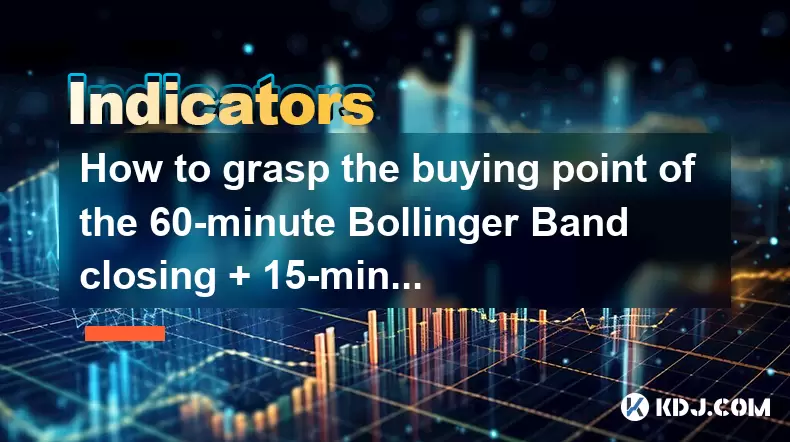
Understanding the Bollinger Band Closing Signal on a 60-Minute Chart
The Bollinger Band closing signal refers to a situation where the price closes outside the upper or lower band and then re-enters it in the subsequent candlestick. In this context, we focus on the lower Bollinger Band closing, which indicates a potential reversal from a downtrend. On the 60-minute chart, this pattern becomes particularly relevant for intraday traders or swing traders looking to capture short-to-medium-term movements.
Key characteristics of a valid Bollinger Band closing signal include:
- The price must close below the lower Bollinger Band, not just touch it.
- The next candle must close within the bands, showing rejection of the lower extreme.
- Volume should ideally increase during the breakout candle and decrease during the re-entry, indicating selling exhaustion.
This pattern suggests that sellers have temporarily pushed the price too far, creating an opportunity for buyers to step in.
Recognizing MACD Bottom Divergence on the 15-Minute Chart
Once the 60-minute chart shows a potential reversal via the Bollinger Band closing, the 15-minute chart is used to confirm momentum alignment through MACD bottom divergence. A MACD bottom divergence occurs when the price makes a new low but the MACD does not, suggesting weakening bearish momentum.
Steps to identify MACD bottom divergence:
- Plot the MACD indicator with default settings (12, 26, 9) on the 15-minute chart.
- Look for two consecutive lows in price where the second low is lower than the first.
- Simultaneously, check if the MACD histogram or line forms a higher low, indicating divergence.
- Confirm the divergence by observing a bullish crossover of the MACD line above the signal line shortly after the second low.
This divergence serves as a momentum confirmation, aligning with the structural signal from the 60-minute Bollinger Band.
Combining Both Indicators for Higher Probability Entry
To effectively combine these signals, traders must monitor both timeframes simultaneously. First, the 60-minute chart must show a confirmed Bollinger Band closing, signaling a potential reversal. Then, the 15-minute chart should exhibit a clear MACD bottom divergence, reinforcing the idea that the downward momentum is waning.
Process to align both indicators:
- After identifying the Bollinger Band closing on the 60-minute chart, switch to the 15-minute timeframe.
- Scan for recent swing lows and compare them with the MACD readings.
- If a divergence is present, wait for a bullish candlestick formation (e.g., hammer, engulfing pattern) near the support level.
- Enter the trade once the candlestick closes above the previous resistance or key moving average levels.
This multi-timeframe approach increases the probability of successful trades by combining structural and momentum signals.
Setting Stop Loss and Take Profit Levels
Risk management remains crucial even when using high-probability setups like this one. For this strategy, the stop loss should be placed below the most recent significant swing low on the 15-minute chart. This ensures that if the price continues to fall past the expected reversal zone, the trade can exit early with minimal losses.
Guidelines for setting stops and targets:
- Place the stop loss approximately 1% below the entry point or beneath the divergence low.
- Set the initial take profit at the nearest resistance level or Fibonacci extension level (e.g., 61.8%).
- Consider trailing the stop to lock in profits once the price moves favorably.
Using fixed risk-reward ratios such as 1:2 or 1:3 helps maintain consistency in trading outcomes over time.
Practical Example Using a Cryptocurrency Pair
Let’s consider a real-world scenario involving BTC/USDT on Binance. Suppose the 60-minute chart shows Bitcoin closing below the lower Bollinger Band, followed by a strong bullish candle that closes back within the bands. This suggests a possible reversal is underway.
Switching to the 15-minute chart reveals that while the price made a new low, the MACD formed a higher low, indicating divergence. A bullish engulfing pattern appears shortly afterward, confirming the shift in momentum.
In this case, a trader would enter a long position at the close of the engulfing candle. The stop loss would be placed just below the divergence low, and the take profit set at the immediate resistance level. If the price rises as anticipated, the trade can be exited manually or allowed to reach the target automatically.
Frequently Asked Questions (FAQs)
Q1: Can this strategy be applied to altcoins as well?
Yes, this strategy works across various cryptocurrencies, including altcoins. However, ensure sufficient liquidity and volume to avoid slippage and false signals.
Q2: What if the MACD divergence doesn’t appear after a Bollinger Band closing?
Not every Bollinger Band closing will coincide with a MACD divergence. It's best to skip the trade and wait for confluence between both indicators to increase accuracy.
Q3: Is it necessary to use exactly the 60-minute and 15-minute charts?
While these timeframes are optimal for this setup, traders can experiment with adjacent timeframes (e.g., 30-minute and 5-minute), though results may vary depending on market conditions.
Q4: How often do these signals occur in crypto markets?
These combined signals appear less frequently than single-indicator setups, but they tend to offer higher reliability. Traders should remain patient and scan multiple pairs to find valid opportunities.
Disclaimer:info@kdj.com
The information provided is not trading advice. kdj.com does not assume any responsibility for any investments made based on the information provided in this article. Cryptocurrencies are highly volatile and it is highly recommended that you invest with caution after thorough research!
If you believe that the content used on this website infringes your copyright, please contact us immediately (info@kdj.com) and we will delete it promptly.
- 2025-W Uncirculated American Gold Eagle and Dr. Vera Rubin Quarter Mark New Products
- 2025-06-13 06:25:13
- Ruvi AI (RVU) Leverages Blockchain and Artificial Intelligence to Disrupt Marketing, Entertainment, and Finance
- 2025-06-13 07:05:12
- H100 Group AB Raises 101 Million SEK (Approximately $10.6 Million) to Bolster Bitcoin Reserves
- 2025-06-13 06:25:13
- Galaxy Digital CEO Mike Novogratz Says Bitcoin Will Replace Gold and Go to $1,000,000
- 2025-06-13 06:45:13
- Trust Wallet Token (TWT) Price Drops 5.7% as RWA Integration Plans Ignite Excitement
- 2025-06-13 06:45:13
- Ethereum (ETH) Is in the Second Phase of a Three-Stage Market Cycle
- 2025-06-13 07:25:13
Related knowledge
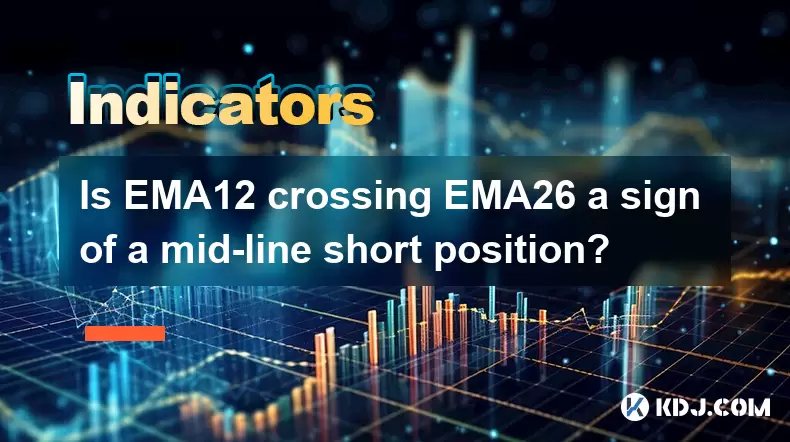
Is EMA12 crossing EMA26 a sign of a mid-line short position?
Jun 16,2025 at 07:22pm
Understanding EMA12 and EMA26 in Cryptocurrency TradingIn the world of cryptocurrency trading, Exponential Moving Averages (EMAs) are widely used tools for analyzing price trends. Specifically, the EMA12 and EMA26 are two of the most commonly referenced EMAs among traders. The EMA12 represents a short-term moving average calculated over the past 12 time...
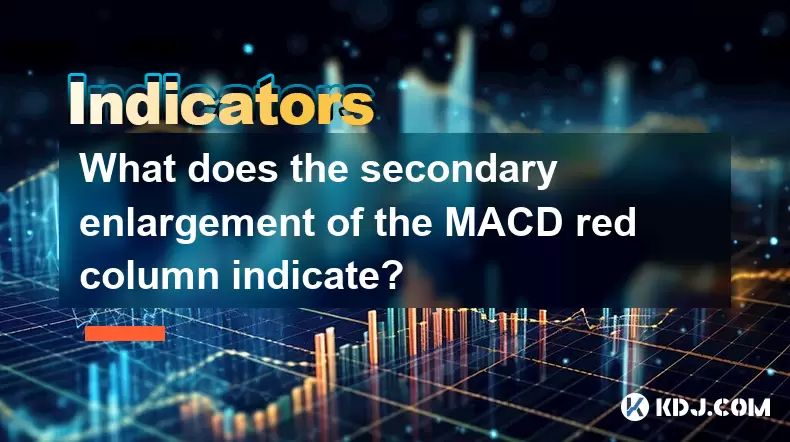
What does the secondary enlargement of the MACD red column indicate?
Jun 16,2025 at 07:49pm
Understanding the MACD Indicator and Its ComponentsThe Moving Average Convergence Divergence (MACD) is a widely used technical analysis tool in cryptocurrency trading. It consists of three main components: the MACD line, the signal line, and the MACD histogram. The histogram, represented as red or green bars, reflects the difference between the MACD lin...
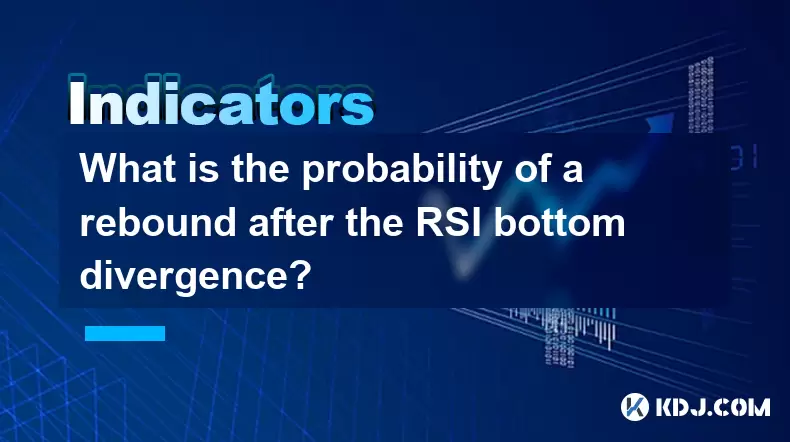
What is the probability of a rebound after the RSI bottom divergence?
Jun 16,2025 at 06:50pm
Understanding RSI Bottom Divergence in Cryptocurrency TradingThe Relative Strength Index (RSI) is a widely used momentum oscillator in technical analysis, particularly within the cryptocurrency market. It helps traders identify overbought or oversold conditions and potential reversal points. A bottom divergence occurs when the price of an asset makes a ...
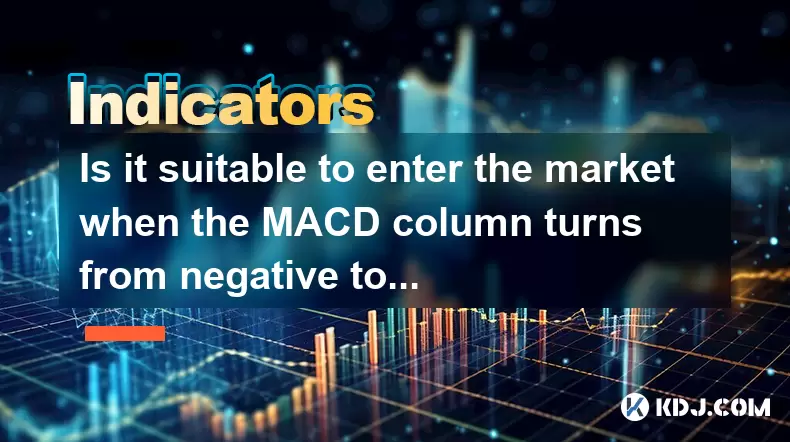
Is it suitable to enter the market when the MACD column turns from negative to positive?
Jun 16,2025 at 06:07pm
Understanding the MACD IndicatorThe Moving Average Convergence Divergence (MACD) is a widely used technical analysis tool in cryptocurrency trading. It consists of three main components: the MACD line, the signal line, and the MACD histogram (often referred to as the MACD column). The MACD line is calculated by subtracting the 26-period Exponential Movi...
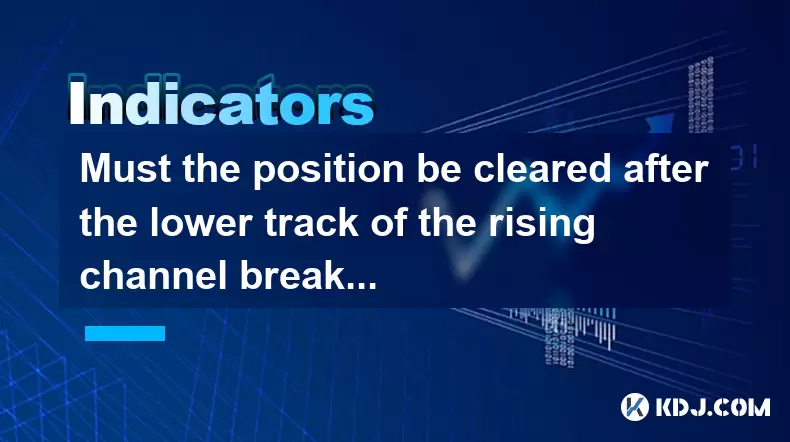
Must the position be cleared after the lower track of the rising channel breaks?
Jun 16,2025 at 04:43pm
Understanding the Rising Channel BreakdownIn technical analysis, a rising channel is formed by drawing two parallel trendlines: one connecting higher lows and another connecting higher highs. When the price breaks below the lower trendline of this channel, it signals a potential reversal or at least a pause in the uptrend. This event often triggers trad...
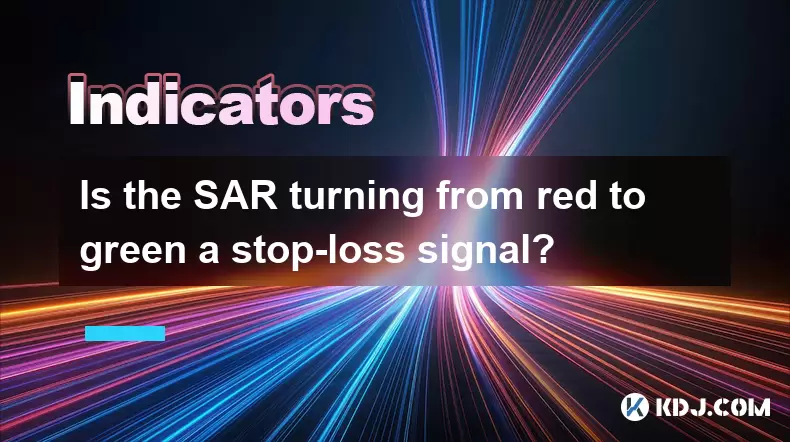
Is the SAR turning from red to green a stop-loss signal?
Jun 16,2025 at 07:07pm
Understanding SAR in Cryptocurrency TradingThe Parabolic SAR (Stop and Reverse) is a technical indicator widely used in cryptocurrency trading to identify potential reversals in price movement. It appears as a series of dots either above or below the asset's price chart. When the dots shift from one side of the price to the other, it signals a reversal....

Is EMA12 crossing EMA26 a sign of a mid-line short position?
Jun 16,2025 at 07:22pm
Understanding EMA12 and EMA26 in Cryptocurrency TradingIn the world of cryptocurrency trading, Exponential Moving Averages (EMAs) are widely used tools for analyzing price trends. Specifically, the EMA12 and EMA26 are two of the most commonly referenced EMAs among traders. The EMA12 represents a short-term moving average calculated over the past 12 time...

What does the secondary enlargement of the MACD red column indicate?
Jun 16,2025 at 07:49pm
Understanding the MACD Indicator and Its ComponentsThe Moving Average Convergence Divergence (MACD) is a widely used technical analysis tool in cryptocurrency trading. It consists of three main components: the MACD line, the signal line, and the MACD histogram. The histogram, represented as red or green bars, reflects the difference between the MACD lin...

What is the probability of a rebound after the RSI bottom divergence?
Jun 16,2025 at 06:50pm
Understanding RSI Bottom Divergence in Cryptocurrency TradingThe Relative Strength Index (RSI) is a widely used momentum oscillator in technical analysis, particularly within the cryptocurrency market. It helps traders identify overbought or oversold conditions and potential reversal points. A bottom divergence occurs when the price of an asset makes a ...

Is it suitable to enter the market when the MACD column turns from negative to positive?
Jun 16,2025 at 06:07pm
Understanding the MACD IndicatorThe Moving Average Convergence Divergence (MACD) is a widely used technical analysis tool in cryptocurrency trading. It consists of three main components: the MACD line, the signal line, and the MACD histogram (often referred to as the MACD column). The MACD line is calculated by subtracting the 26-period Exponential Movi...

Must the position be cleared after the lower track of the rising channel breaks?
Jun 16,2025 at 04:43pm
Understanding the Rising Channel BreakdownIn technical analysis, a rising channel is formed by drawing two parallel trendlines: one connecting higher lows and another connecting higher highs. When the price breaks below the lower trendline of this channel, it signals a potential reversal or at least a pause in the uptrend. This event often triggers trad...

Is the SAR turning from red to green a stop-loss signal?
Jun 16,2025 at 07:07pm
Understanding SAR in Cryptocurrency TradingThe Parabolic SAR (Stop and Reverse) is a technical indicator widely used in cryptocurrency trading to identify potential reversals in price movement. It appears as a series of dots either above or below the asset's price chart. When the dots shift from one side of the price to the other, it signals a reversal....
See all articles

























































































